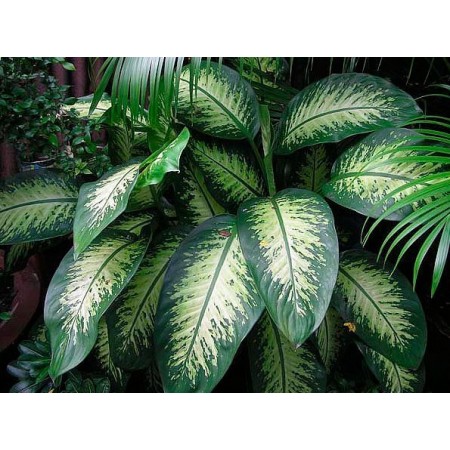Growing aglaonema at home

Aglaonema is an exotic tropical flower that can, if desired, be easily grown at home. This is not to say that every grower necessarily contains this representative of the flora in the house, but the presence of a flowerpot with such unique splendor will allow you to refresh your home environment without any difficulties.
Choosing the right place in the house
The “golden mean” for the aglaonema is a slightly dim place, where there are no direct sunlight. It’s best to place the pot on the windowsill in the eastern part of the house, as the plant can also suffer from complete shade. Without the sun, the huge leaves of the flower will lose their saturation and quickly fade. The more variegated the color of the leaves, the more ultraviolet the plant needs.
In the summer, the aglaonema tolerates well-ventilated places, but in winter it is better to protect the flowerpot from drafts and getting cool into the room. It is also not recommended to place it on the windowsills above the batteries and radiators, which significantly dry the air and do not allow the flower to blossom in all its splendor.
Important: the aglaonema should be kept away from the places where the children are. The juice of this plant is very toxic, so kids are strictly forbidden to touch it.
Temperature, humidity and watering
Since aglaonema belongs to the tropical varieties of flowers, it must be watered abundantly and regularly. As soon as the earthen lump dries up, the grower needs to bring in a certain amount of moisture without overdoing it. In summer, the number of water procedures can be maintained at once a day, and in winter, watering time can be reduced to once every few days.
In the summer, the optimal temperature in a room with an aglaonema will be an indicator in the region of 20 to 25 degrees Celsius. In winter, to ensure a period of rest, it is better to maintain the temperature within 16 degrees of heat.
Excessive air humidity can trigger the development of various diseases in the flower. The lower the temperature, the less humidity should be. If the room is hot, to ensure access to the liquid, it is recommended to install special containers with water next to the pot - so the aglaonema can be saturated with moisture and delight us with abundant flowering.
Top dressing
It is necessary to introduce mineral fertilizers into the container with the plant in the summer, spring and in the first months of autumn. In winter, the flower rests, not needing additional nutrition. The mixtures themselves, in addition to standard components, must contain a certain percentage of nitrogen.
Each florist can use instructions that indicate which substances and in which quantities are best suited for this fastidious roomman in caring for a flower. Excessive consumption of fertilizers is no less dangerous for the agglomeration than high humidity or an excess of moisture in the pot.